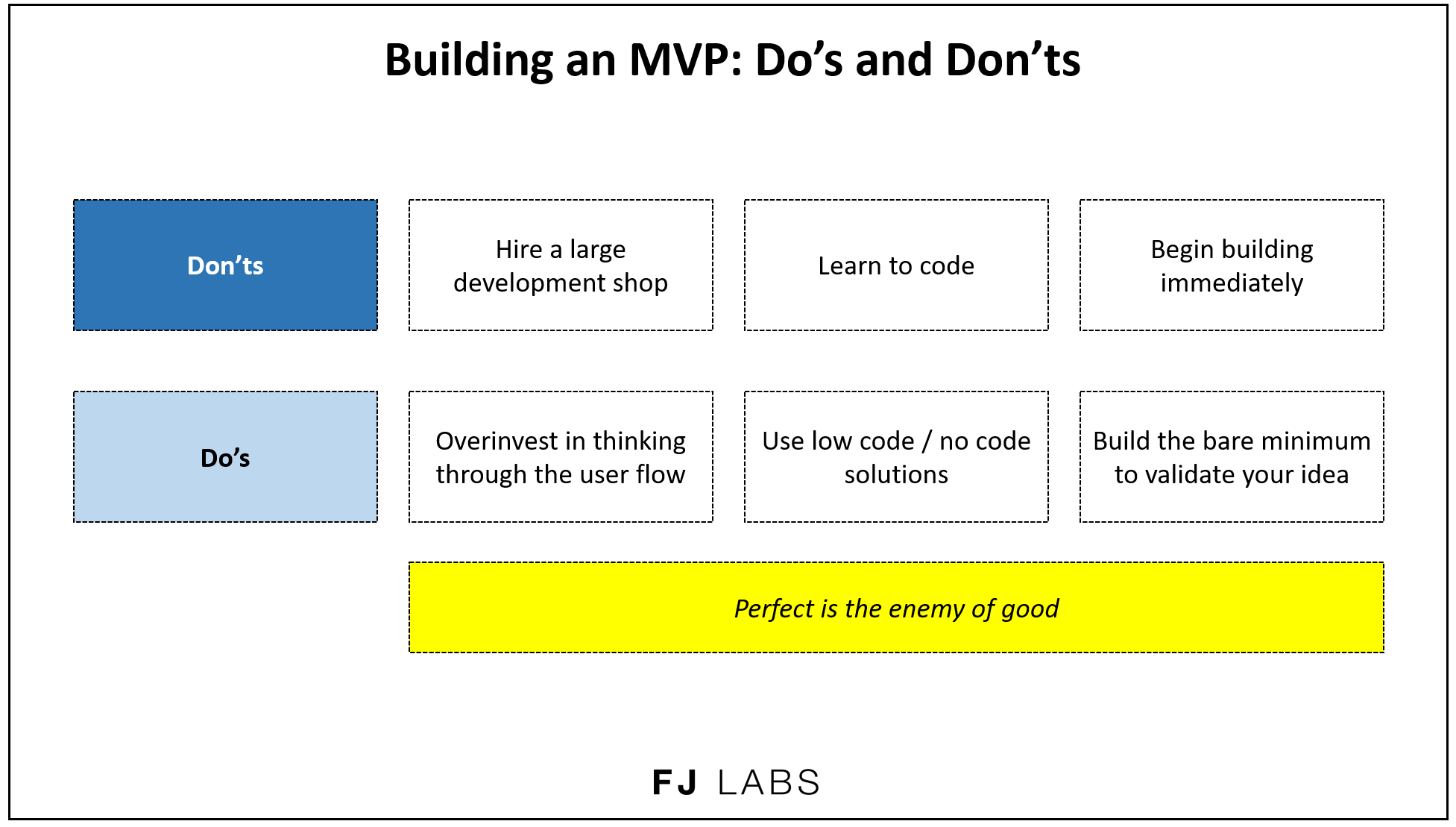I start by covering the theoretical do’s and don’ts of building a minimum viable product (MVP) before giving an in depth and specific example of how I would go about building a mobile golf application allowing golfers to find partners to play with at their handicap, in their region and/or club, with the same availability.
I cover how to use various tools and services such as Balsamiq, Awesome Screenshot and Upwork.
For your reference I am including the do’s and don’ts slide I used during the episode and embedding links to the PowerPoint presentation I used as well as the PDF output of the Balsamiq flow.

If you prefer, you can listen to the episode in the embedded podcast player.
In addition to the above Youtube video and embedded podcast player, you can also listen to the podcast on:

Hey Frabice – really enjoyed the episode. A friend of mine sent this to me after I told him that I’m interested in building a (somewhat) similar golf matching platform to what you described.
I’m curious, what did you learn about this idea that showed you it wasn’t going to work?
I plan on doing my own due diligence by following your process for “validating the idea”, but if there are any key insights you can share it would be much appreciated!
Hey Fabrice – thanks for this rundown! I see here that you sourced a developer on Upwork to build out the MVP. I’ve heard a lof of entrepreneurs caution against outsourcing development because apparently the code they get back tends to be messy and in need of extensive revisions if they want to build upon it futher. Is the idea here just to minimize cost knowing that if the MVP shows promise pretty much all of the code will need to be rewritten by an in-house team? Or have you generally received high quality code from developers on Upwork? Thanks!
Lovely explanation on creating an MVP. What is your handicap my friend?
Thanks a lot. Heard about you on “Generation Do It Yourself” podcast and not disappointed to follow you now!
“perfect is the enemy of good” – great quote
Wicked. Thanks Fabrice.